Faryion Edward Wardrip

Classification: Serial killer
Characteristics: Rape
Number of victims: 5
Date of murders: 1984 - 1986
Date of birth: March 6, 1959
Victims profile: Terry Lee Sims, 20 / Toni Jean Gibbs, 24 / Debra Taylor, 25 / Ellen Blau, 21 / Tina Elizabeth Kimbrew, 22
Method of murder: Suffocation / Stabbing with knife / Strangulation
Location: Wichita County, Texas, USA
Status: Sentenced to 35 years in prison in 1986. Released on December 11, 1997. Sentenced to death on November 9, 1999. Overturned in 2010. Resentenced to life in prison without parole
Name TDCJ Number Date of Birth
Wardrip, Faryion Edward 999331 03/06/1959
Date Received Age (when Received) Education Level
11/09/1999 40 11
Date of Offense Age (at the Offense) County
12/21/1984 25 Denton (on change of venue from Wichita)
Race Gender Hair Color
White Male Brown
Height Weight Eye Color
202 6' 5" Blue
Native County Native State Prior Occupation
Washington Indiana clerk, orderly, laborer
Prior Prison Record
TDCJ-ID #439572 on a 35-year sentence from Wichita County for 1 count of murder, involves the subject beating and suffocating a 21-year old female. 12/11/97 release on mandatory supervision.
Summary of incident
On 12/21/1984, at the home of a white female, Wardrip committed Burglary of Habitation and Murder. Wardrip used a knife to stab the victim to death after gaining entry.
The subject admits that on that evening he had been "screaming at the stars" while walking sleeplessly in a residential area in Wichita Falls, Texas. The victim came outside to observe the commotion, which alerted the subject to her presence. Wardrip charged at the victim, who closed the door, however, Wardrip broke the door down. Once inside, he killed the victim for no apparent reason (other than a fit of rage).
Wardrip pleaded guilty after DNA evidence linked him to the murder of this victim as well as three other women.
Co-defendants
None
Race and Gender of Victim
White female
Convicted murderer charged in unsolved killings
Prosecutor: Texas Man Confesses to Four Slayings
February 18, 1999
WICHITA FALLS, Texas (APBnews.com) -- Convicted killer Faryion Edward Wardrip, who served 11 years in prison for suffocating a 21-year-old waitress, has confessed to killing four other Texas women in the mid-1980s.
Wichita County District Attorney Barry Macha told APB News today that Wardrip admitted that he killed college student Terry Lee Sims in 1984 and three other women in 1985.
Wardrip, 39, was charged last week with capital murder in the stabbing death of Sims, and two more counts of capital murder were added Tuesday for the killings of Toni Gibbs and Ellen Blau. He was indicted by a grand jury in the Sims and Blau slayings Wednesday.
Wardrip will be arraigned on the Sims and Blau cases in the next few weeks, while the Gibbs case will go to trial in neighboring Archer County on March 5, Macha said.
10 unsolved killings
Macha said Wardrip has also admitted strangling 25-year-old Fort Worth homemaker Debra Taylor, whose body was found in a grove of trees on March 29, 1985, five days after she disappeared. Fort Worth investigators arrived at Wichita County jail Wednesday to question Wardrip about the Taylor case, and he has yet to be charged.
The Taylor homicide was one of 10 unsolved cases that occurred about the same period that Wardrip admitted he killed the other women.
Macha said he does not know if there will be any additional charges filed against Wardrip but said he is convinced a number of unsolved cases will get a fresh look.
"I do expect more re-examination of those files," said Macha.
It was a combination of "old-fashioned police work" and modern DNA analysis that connected Wardrip to the murders and helped crack cold cases that had stumped police, Macha said.
DNA clears two
"Police had been looking at different suspects in all the cases," he said. "After two suspects were cleared by DNA in the Sims and Gibbs cases all bets were off. I knew we had to start from scratch and see if these cases were related."
After discovering that the DNA from sperm found in the bodies of Sims and Gibbs matched, Macha brought in a new detective early this year to go through the files and see if any suspects' names matched.
Paroled in 1997, Wardrip had remarried, taken a job working for a screen and door factory and become a regular churchgoer, even teaching Sunday school to children at Hamilton Street Church of Christ in his hometown of Olney.
Saliva from a coffee cup
When Wardrip's name surfaced in the files, Macha sent a detective to the factory where Wardrip worked. The detective followed Wardrip until he saw him toss a used coffee cup in the waste basket, which the detective retrieved. The DNA from Wardrip's saliva on the cup matched the DNA found on Sims and Gibbs, said Macha.
The body of the first victim, Sims, a Midwestern State University education major and health care worker, was found in a friend's bathroom Dec. 20, 1984. Her hands were tied with an electrical cord. She had been stabbed 11 times and raped.
Wichita Falls terrorized
Sims' murder was one of four that occurred in Wichita Falls over an 18-month period, terrifying women residents who began buying guns and avoiding going out alone at night.
Gibbs's corpse was found on February 15, 1985, in a bus left in Archer County. Also it had been stabbed repeatedly and raped.
In the third case, Wardrip was indicted in the 1985 death of Blau, a 21-year-old Midwestern State University student whose rotting corpse was found Oct. 10, 1985, in a field north of Wichita Falls, Wichita County Assistant District Attorney Rick Mahler said.
Wardrip was considered guilty of asphyxiating 21-year-old Tina Kimbrew, in her apartment on May 6, 1986, and was condemned in December, 1986 to 35 years of prison.
Convicted killer admits 4th murder
Tuesday, February 23, 1999
A former Sunday school teacher and convicted killer who confessed to three murders also admitted he killed a Fort Worth woman.
Faryion Edward Wardrip told investigators last week he killed Debra Taylor in March 1985.
The confession answered questions that had nagged Taylor's family for nearly 14 years.
"It's not so much that I went on with my life, but that I pretty much gave up on them finding a suspect," Tarra Shirley, Taylor's 21-year-old daughter, told the Fort Worth Star-Telegram in today's editions. She was 7 years old when her mother was killed.
"I talked to the police several years ago, probably about five years ago, and they still didn't know anything, so I just gave up on it."
Wardrip, 39, was charged Tuesday with capital murder in the 1985 death of Ellen Blau and was being held in Wichita Falls. The 21-year-old college student's decomposed body was found in a field, three weeks after she disappeared from her nighttime job at a store.
Wardrip also has been charged in the 1984 killing of Terry Sims and the 1985 death of Toni Gibbs. He has confessed to all three crimes, as well as Taylor's killing, according to his arrest affidavit in Blau's death.
At the time of the confession, Wardrip was on parole for the 1986 killing of Tina Elizabeth Kimbrew, a 21-year-old waitress. He was released from prison in December 1997, after serving 11 years of a 35-year sentence.
Two Fort Worth detectives went to Wichita Falls last week and returned with Wardrip's statement about Taylor. Lt. Mark Krey, supervisor of the Fort Worth police violent crimes unit, said details Wardrip provided about Taylor's death "folded nicely" with what police already knew.
IN THE COURT OF CRIMINAL APPEALS OF TEXAS
NO. 73,671
FARYION EDWARD WARDRIP
v.
THE STATE OF TEXAS
ON DIRECT APPEAL
FROM WICHITA COUNTY
Per curiam. Keller, P.J., concurs with ground one, otherwise she joins the remainder of the opinion.
Appellant was convicted of capital murder on November 5, 1999. Tex. Penal Code Ann. �19.03(a)(2). Pursuant to the jury's answers to the special issues set forth in Texas Code of Criminal Procedure article 37.0711 �3(b) and �3(e), the trial judge sentenced appellant to death. Art. 37.0711 �3(g). (1) Direct appeal to this Court is automatic. Art. 37.0711 �3(j). Appellant raises two points of error challenging the sufficiency of the evidence at the punishment phase. We will affirm.
DELIBERATENESS SPECIAL ISSUE
In his first point of error, appellant claims the evidence is insufficient to support the jury's affirmative answer to special issue number one, "whether the conduct of the defendant that caused the death of the deceased was committed deliberately and with the reasonable expectation that the death of the deceased or another would result." This special issue is no longer submitted in trials of offenses that were committed on or after September 1, 1991. See Art. 37.071, �� 2(b) & (g). But it is submitted if the offense was See Art. 37.0711, �� 1 & 3(b)(1). This capital murder was committed on December 21, 1984.
Although appellant argues that the evidence of deliberateness is legally insufficient, he urges us to extend the factual sufficiency standard announced in Clewis v. State, 922 S.W.2d 126 (Tex. Crim. App. 1996), to our review of the deliberateness special issue.
Appellant acknowledges that we have repeatedly declined to conduct a factual sufficiency review of the future dangerousness special issue. McGinn v. State, 961 S.W.2d 161, 169 (Tex. Crim. App.), cert. denied, 525 U.S. 967 (1998). When reviewing the future dangerousness special issue, we have employed the legal sufficiency standard set forth in Jackson v. Virginia, 443 U.S. 307, 319 (1979). McGinn, 961 S.W.2d at 169. We view the evidence in the light most favorable to the verdict and determine whether any rational trier of fact could have found beyond a reasonable doubt that there is a probability that appellant would commit criminal acts of violence constituting a continuing threat to society. Jackson, 443 U.S. at 319; Chambers v. State, 866 S.W.2d 9, 16-17 (Tex. Crim. App. 1993), cert. denied, 511 U.S. 1100 (1994).
In McGinn, we stated that "future dangerousness is, in essence, an issue of prediction," as opposed to "an issue of historical fact." (2) 961 S.W.2d at 168. We explained: "Findings of historical fact are either right or wrong at the time of trial. But, predictions are not right or wrong at the time of trial--they may be shown as accurate or inaccurate only by subsequent events." Id. We held that a Clewis review of the future dangerousness issue is impossible because it would require us to assign some evidence mitigating value and to substitute our judgment for that of the jury. Id. We concluded that the Jackson standard should instead be used because it views the evidence in the light that supports the jury's verdict and asks only whether circumstances are present that a rational person somewhere could find a probability of future dangerousness beyond a reasonable doubt. Id.
Deliberateness, unlike future dangerousness, requires a finding of historical fact that is either right or wrong at the time of trial. It is distinguishable from future dangerousness because it involves an assessment of events that have already occurred. A Clewis review of deliberateness would not present the problems discussed in McGinn. Hence, we hold that the deliberateness special issue may be reviewed for factual sufficiency using the Clewis standard. (3)
In our review of the factual sufficiency of the evidence, we view all the evidence without the prism of "in the light most favorable to the verdict" and set aside the verdict only if it is so contrary to the overwhelming weight of the evidence as to be clearly wrong and unjust. Jones v. State, 944 S.W.2d 642, 647 (Tex. Crim. App. 1996), cert. denied, 522 U.S. 832 (1997); Clewis, 922 S.W.2d at 129. Appellant pleaded guilty to the capital murder of Terry Sims. The State presented evidence of the offense during the punishment phase of the trial. Leza Boone, Sims' friend and co-worker, testified that she and Sims finished working their shifts at Bethania Hospital in Wichita Falls at approximately 11:15 p.m. on the night of December 20, 1984. They planned to exchange Christmas gifts at the home of a friend after work and Sims was to stay at Boone's residence that night to help her study for her final exam the following day. Boone was unexpectedly called to return to the hospital to work the next shift, so she drove Sims to Boone's residence after the Christmas gift exchange. She dropped Sims off at approximately 12:30 a.m. on December 21, 1984.
Boone finished her shift at the hospital at approximately 7:15 a.m. and returned to her residence. Sims did not answer the door, so Boone obtained a key from her landlord who lived two doors down. Boone opened the door and noticed that the living room was in disarray. Sims did not respond when Boone yelled her name, so Boone ran back to her landlord's residence and told him that something was wrong. The landlord then entered Boone's residence and discovered Sims' dead body.
Sims was found lying naked on her left side in a pool of blood on the bathroom floor. Her hands were bound tightly behind her back with part of an extension cord that was tied in four knots. Her body was covered in blood and there was blood splattered on the bathroom walls and floor. The living room and front bedroom were in disarray. There were blood stains on the bed sheets and the floor in the front bedroom. Sims' bloodstained clothes were on the floor in the living room and front bedroom.
Dr. Allen Stilwell, the forensic pathologist who performed the autopsy on Sims' body, testified that she had eight stab wounds on the front of her chest, three stab wounds on the right side of her back, one stab wound on her left upper arm, and defensive cuts on her hands and fingers. Stilwell believed that Sims sustained most of these stab wounds after her assailant tied her hands behind her back. Sims also had bruises on the bridge of her nose, her lips, and above the left side of her cheek and eye. Stilwell testified that these bruises were consistent with Sims being struck by a fist or by her falling and banging her head on the floor. He further testified that Sims had additional "tease wounds" which were inflicted by her assailant "to get her attention." (4) He testified that at least one of Sims' stab wounds caused hemorrhaging when it punctured a major artery and that other stab wounds caused her lungs to collapse which prevented her from breathing. He determined that Sims probably died from these injuries within two to four minutes after they were inflicted.
The forensic test results showed the presence of sperm on the oral and vaginal swabs taken from Sims's body. The DNA testing of appellant's blood and saliva samples revealed that appellant was the only individual who could have contributed the sperm found on Sims' oral swab. (5) In addition, appellant's fingerprints matched a bloody fingerprint found on Sims' tennis shoe.
Appellant gave a statement after his arrest. In his statement, he claimed that he was under the influence of "heavy drugs" on the night he murdered Sims. He stated that he was out walking when he saw Sims. He forced his way into the residence and "just ransacked her, just slung her all over the house in a violent rage." He remembered "stripping her down out of anger," tying her hands behind her back, and stabbing her with a knife, but he did not recall having sex with her. He could not remember if he brought the knife with him or what he did with the knife after he committed the murder. Appellant stated that he was "mad at the world" and that his drinking and drug abuse caused him to be paranoid and to have violent outbursts. He had the urge to "lash out" at two or three people that evening, but he acted on his urge when he encountered Sims.
Appellant argues that the evidence is insufficient because there is no evidence of planning, preparation, or premeditation. He contends that he came to the murder scene unarmed and was in a "blind rage" when he attacked Sims. A jury must find "a moment of deliberation and the determination [by] the actor to kill" before it is justified in answering "yes" to special issue number one. Kinnamon v. State, 791 S.W.2d 84, 95-96 (Tex. Crim. App. 1990), overruled on other grounds, Cook v. State, 884 S.W.2d 485, 491 (Tex. Crim. App. 1994). An act need not be premeditated to be deliberate, however, and the killing may occur during a "frenzy." Havard v. State, 800 S.W.2d 195, 212 (Tex. Crim. App. 1989)(citing Granviel v. State, 552 S.W.2d 107, 122-23 (Tex. Crim. App. 1976), cert. denied, 431 U.S. 933 (1977)). Further, this Court has recognized that whether or not a defendant comes armed to a crime scene is of probative value in proving deliberate conduct. Cooks v. State, 844 S.W.2d 697, 714 (Tex. Crim. App. 1992), cert. denied, 509 U.S. 927 (1993).
Appellant's repeated stabbing of Sims evidences a deliberate act with a reasonable expectation that death would result. See Fearance v. State, 620 S.W.2d 577, 584 (Tex. Crim. App. 1980) (opinion on rehearing), cert. denied, 454 U.S. 899 (1981); Granviel, 552 S.W.2d at 123. Appellant's admitted anger and his urge to "lash out" is indicative of deliberateness. The evidence that he sexually assaulted Sims, tied her up, and stabbed her numerous times after he tied her hands behind her back also demonstrates deliberate conduct. Further, the evidence shows that appellant may have come armed to the crime scene. Appellant could not remember whether or not he brought the knife with him and the knife was never found.
Accordingly, the evidence was sufficient for the jury to find that appellant's conduct was deliberate and committed with the reasonable expectation that death would result. The jury's finding of deliberateness is not so contrary to the overwhelming weight of the evidence as to be clearly wrong or unjust. Clewis, 922 S.W.2d at 129. Appellant's first point of error is overruled.
FUTURE DANGEROUSNESS SPECIAL ISSUE
In his second point of error, appellant claims the evidence is legally insufficient to support the jury's affirmative answer to the "future dangerousness" special issue. We review the evidence in the light most favorable to the jury's verdict to determine whether any rational trier of fact could have concluded beyond a reasonable doubt that "there is a probability that the defendant would commit criminal acts of violence that would constitute a continuing threat to society." Art. 37.0711 � 3(b)(2); Jackson, 443 U.S. at 319.
The State introduced evidence that appellant murdered four more women in the two years following the murder of Terry Sims. Appellant's second victim was Toni Gibbs. On February 15, 1985, utility workers found Gibbs' nude body in a field in Archer County, a short distance from the Wichita County line. Gibbs had three stab wounds on her back, three stab wounds on her chest, and two defensive wounds on her left forearm and thumb. DNA testing revealed that appellant's blood and saliva samples matched the sperm found on the vaginal smear taken from Gibbs' body.
Appellant admitted to the murder of Gibbs in his statement. He encountered Gibbs at about six o'clock in the morning, after he had been out walking all night. He knew Gibbs because she was a nurse at the hospital where he worked as a janitor. Gibbs offered him a ride and he "started seeing images of hatred and anger" after he got in her car. He began "slinging" her around in the car and screaming at her and forced her to drive down a dirt road to a field. He admitted that he removed Gibbs' clothing and stabbed her, but he could not remember if he had sex with her. He left the scene in Gibbs' car and abandoned it on a street off the side of the freeway.
Appellant's third victim was Debra Taylor, whose body was found in a field in Fort Worth on March 29, 1985. Taylor sustained blunt-force injuries to her head and face and her death was caused by manual strangulation. The medical examiner was unable to determine whether or not Taylor had been sexually assaulted. Appellant admitted in his statement that he strangled Taylor to death behind a Fort Worth nightclub and disposed of her body in the field.
Ellen Blau was appellant's fourth victim. A county road crew employee found Blau's body in a field in Wichita County on October 10, 1985. The state of decomposition was such that the doctor who performed the autopsy could only conclude that the cause of death was "undetermined homicidal violence." Appellant admitted in his statement that he abducted Blau from a parking lot and forced her to drive down a dirt road. He took her to a field and stripped off her clothes, but did not recall if he raped her. He did not remember how she died, but stated: "She probably broke her neck because I was slinging her." Afterward, he drove back into town and abandoned her car.
Appellant's fifth victim was Tina Kimbrew, whose body was found on the floor of her ransacked apartment in Wichita Falls on May 6, 1986. Kimbrew had numerous bruises on her face, neck, and legs. Her nightgown was pulled up above her waist and her underwear was on the floor near her body; however, there was no evidence of recent sexual activity. The doctor who performed the autopsy concluded that Kimbrew was smothered to death. Appellant confessed to the murder of Kimbrew shortly thereafter. (6) He pleaded guilty to murder and was sentenced to thirty-five years in prison. He was released on parole in 1997.
The State introduced a penitentiary packet showing appellant's 1986 conviction and thirty-five year sentence for the murder of Tina Kimbrew. Appellant's prison disciplinary records contained in his penitentiary packet showed that he was disciplined in prison for creating a disturbance and fighting without a weapon. The State introduced additional evidence that appellant dropped out of school in the twelfth grade and that he was discharged from the Army National Guard after a period of six years due to his conduct and willful absences.
A jury is permitted to consider a variety of factors when determining whether a defendant will pose a continuing threat to society. (7) See Keeton v. State, 724 S.W.2d 58, 61 (Tex. Crim. App. 1987). Although the Keeton factors are relevant, the circumstances of the offense "can be among the most revealing evidence of future dangerousness and alone may be sufficient to support an affirmative answer to that special issue." Wilson v. State, 7 S.W.3d 136, 142 (Tex. Crim. App. 1999)(citing Bell v. State, 938 S.W.2d 35, 41 (Tex. Crim. App. 1996), cert. denied, 522 U.S. 827 (1997)). The murder of Sims in the instant case was particularly brutal. Appellant tied her up with an electrical cord, raped her, and stabbed her multiple times. Appellant also admitted to murdering four other women in the two years after he murdered Sims. (8) The evidence shows that appellant raped and stabbed one of the four other victims and strangled two of them. He severely beat all of his victims. Further, the evidence showed that appellant was disciplined in prison and dishonorably discharged from the Army National Guard.
On this record, we cannot say that the jury's finding of future dangerousness is irrational. See Jackson, 443 U.S. at 319. The evidence viewed in a light favorable to the jury's determination was sufficient to support an affirmative answer to the future dangerousness special issue. Appellant's second point of error is overruled.
We affirm the judgment of the trial court.
Delivered October 3, 2001.
*****
Notes:
1. Unless otherwise indicated, all future references to Articles refer to Code of Criminal Procedure.
2. As we stated in McGinn, only one of the cases cited in Clewis demonstrated that a factual sufficiency review may have been applied to a punishment issue. 961 S.W.2d at 167. That case involved the sufficiency of the evidence to sustain a jury finding of "malice" in a murder case in which the defendant was given the death penalty. Villareal v. State, 146 S.W.2d 406 (Tex. Crim. App. 1940), overruled on other grounds, Mays v. State, 563 S.W.2d 260, 264 n. 5 (Tex. Crim. App. 1978). We distinguished McGinn from Villareal by stating that "malice" was an issue of historical fact, but future dangerousness is an issue of prediction. McGinn, 961 S.W.2d at 168.
3. We note, however, that the factual sufficiency review process begins with the assumption that the evidence is legally sufficient under the Jackson test. Clewis, 922 S.W.2d at 134; Jones, 944 S.W.2d at 647; Santellan v. State, 939 S.W.2d 155, 164 (Tex. Crim. App. 1997).
4. Stilwell testified that the "tease wounds" were smaller wounds that were different than actual stab wounds because they just broke the skin and went into the soft tissue. There was a "tease wound" around Sims' right nipple which Stilwell testified could have been indicative of some type of sexual activity.
5. John Little, an investigator for the Wichita County District Attorney's Office, began investigating appellant as a suspect in the Sims case and obtained a saliva sample in January 1999. Appellant had already been convicted of the murder of Tina Kimbrew and was out on parole at that time.
6. Appellant traveled to Galveston after Kimbrew's murder, checked into a beachfront hotel, and called the police threatening to commit suicide. He confessed to the murder after the Galveston police responded to his call.
7. These factors include, but are not limited to: (1) the circumstances of the capital offense, including the defendant's state of mind and whether he was working alone or with other parties; (2) the calculated nature of the defendant's acts; (3) the forethought and deliberateness exhibited by the crime's execution; (4) the existence of a prior criminal record, and the severity of the prior crimes; (5) the defendant's age and personal circumstances at the time of the offense; (6) whether the defendant was acting under duress or the domination of another at the time of the offense; (7) psychiatric evidence; and (8) character evidence. Keeton, 724 S.W.2d at 61.
8. Appellant argues that Keeton says the jury should consider only the existence of a prior criminal record in determining future dangerousness. He contends that the jury should not have considered the murders of Gibbs, Taylor, Blau, and Kimbrew because they were committed after the murder of Sims. The Keeton list, however, is not exhaustive. Barnes v. State, 876 S.W.2d 316, 322 (Tex. Crim. App.), cert. denied, 513 U.S. 861 (1994). This evidence was certainly relevant to the jury's determination of future dangerousness. See Granviel v. State, 552 S.W.2d at 123 (evidence of future dangerousness was sufficient where defendant killed and raped other women in the four months after the instant offense); Allridge v. State, 850 S.W.2d 471, 489 (Tex. Crim. App. 1991)(seven other aggravated robberies committed by the defendant after the instant offense and before his arrest were indicative of future dangerousness), cert. denied, 510 U.S. 831 (1993); Miles v. State, 918 S.W.2d 511, 514 (Tex. Crim. App. 1996)(defendant's commission of armed robbery less than one month after the instant offense was evidence of future dangerousness).

Faryion Edward Wardrip

Faryion Edward Wardrip

Faryion Edward Wardrip

Faryion Edward Wardrip
The victims

Terry Sims, 21
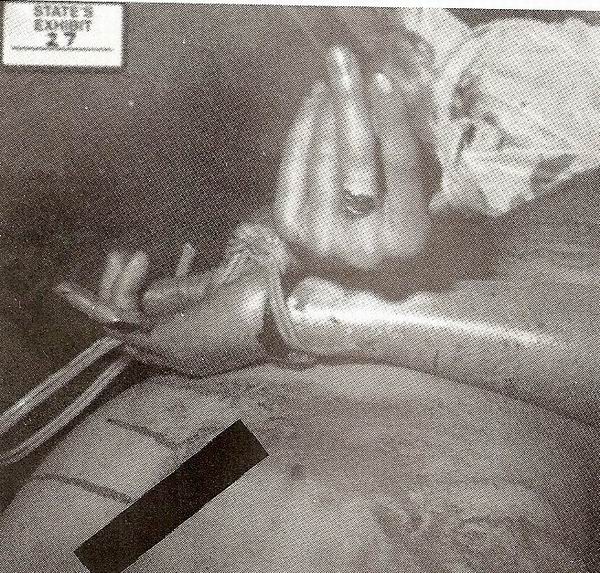
Sims was raped and stabbed to death in her home.
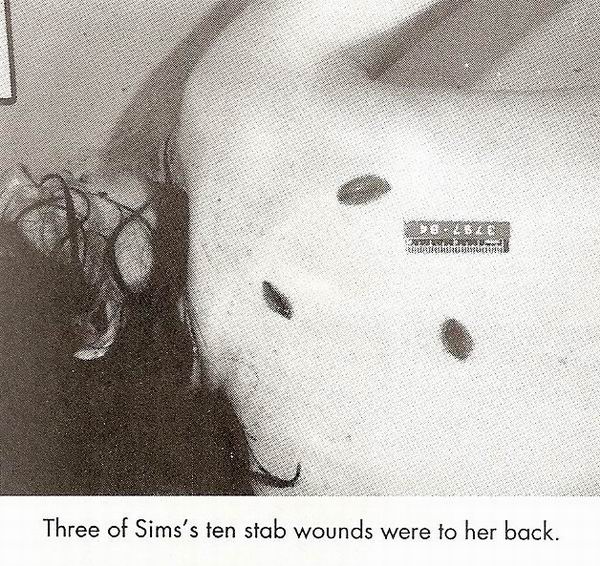
*****

Toni Gibbs, 23
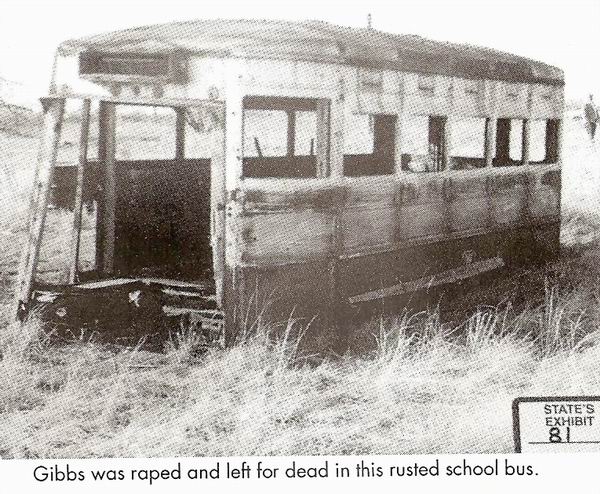
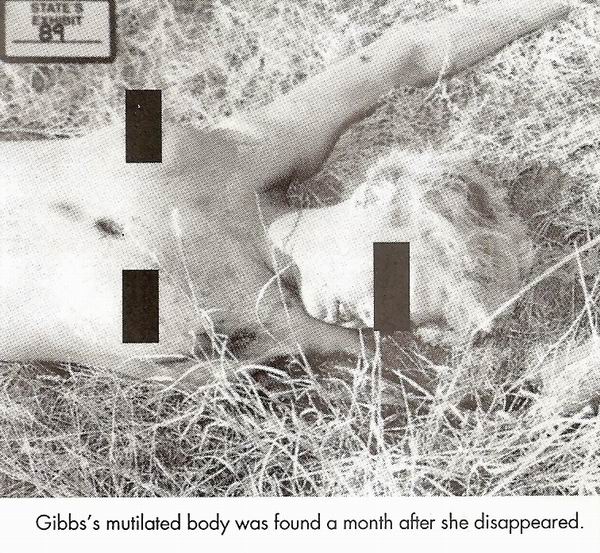

*****

Debra Taylor, 25
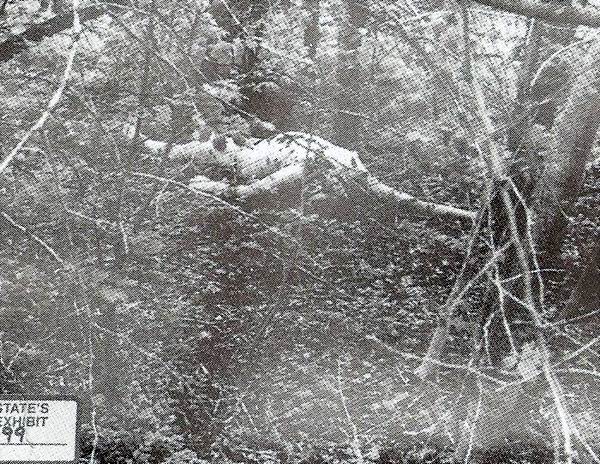
Beaten and strangled.
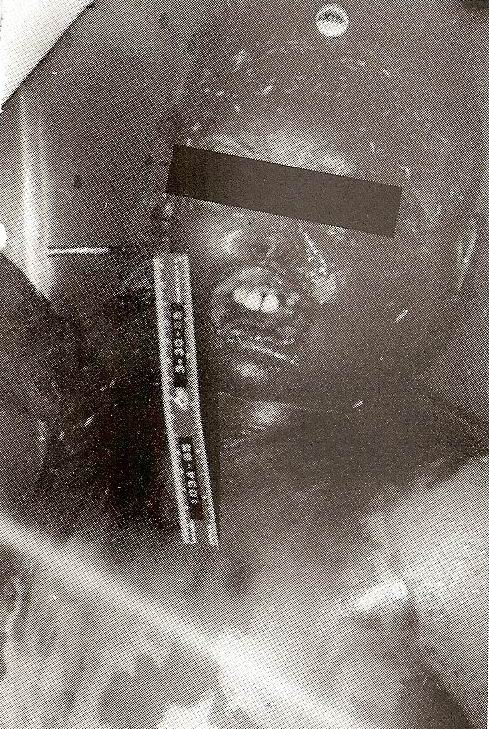
Found in a remote area of Fort Worth, Texas, Taylor's decomposing body
had to be identified through dental records.
*****

Ellen Blau, 21
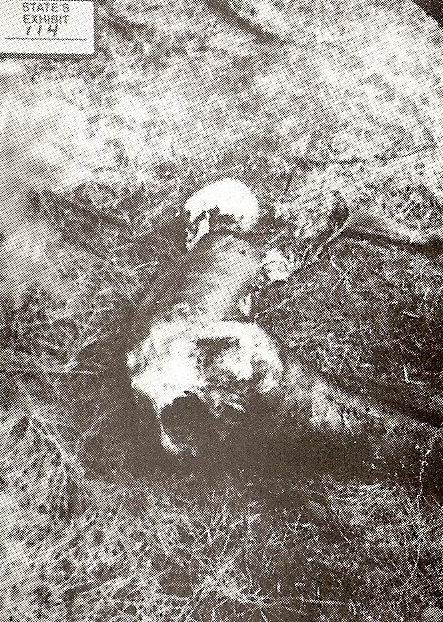
Blau had been missing for three weeks, before her body was found ravaged by animals.
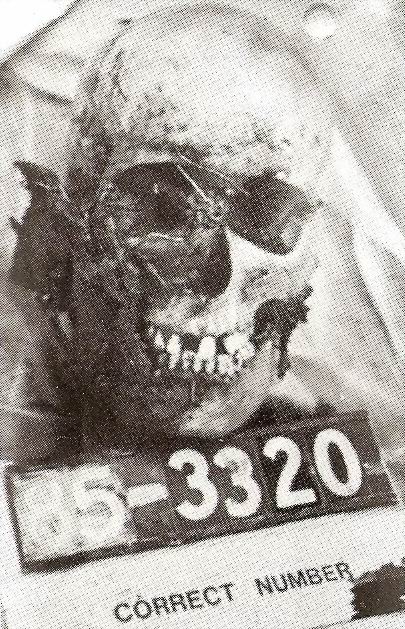
Police found all of the hair and flesh gone from Blau's skull.
*****

Tina Kimbrew, 21

This murder first sent him to prison. After he was released he was linked to the other 4 murders.

Classification: Serial killer
Characteristics: Rape
Number of victims: 5
Date of murders: 1984 - 1986
Date of birth: March 6, 1959
Victims profile: Terry Lee Sims, 20 / Toni Jean Gibbs, 24 / Debra Taylor, 25 / Ellen Blau, 21 / Tina Elizabeth Kimbrew, 22
Method of murder: Suffocation / Stabbing with knife / Strangulation
Location: Wichita County, Texas, USA
Status: Sentenced to 35 years in prison in 1986. Released on December 11, 1997. Sentenced to death on November 9, 1999. Overturned in 2010. Resentenced to life in prison without parole
Name TDCJ Number Date of Birth
Wardrip, Faryion Edward 999331 03/06/1959
Date Received Age (when Received) Education Level
11/09/1999 40 11
Date of Offense Age (at the Offense) County
12/21/1984 25 Denton (on change of venue from Wichita)
Race Gender Hair Color
White Male Brown
Height Weight Eye Color
202 6' 5" Blue
Native County Native State Prior Occupation
Washington Indiana clerk, orderly, laborer
Prior Prison Record
TDCJ-ID #439572 on a 35-year sentence from Wichita County for 1 count of murder, involves the subject beating and suffocating a 21-year old female. 12/11/97 release on mandatory supervision.
Summary of incident
On 12/21/1984, at the home of a white female, Wardrip committed Burglary of Habitation and Murder. Wardrip used a knife to stab the victim to death after gaining entry.
The subject admits that on that evening he had been "screaming at the stars" while walking sleeplessly in a residential area in Wichita Falls, Texas. The victim came outside to observe the commotion, which alerted the subject to her presence. Wardrip charged at the victim, who closed the door, however, Wardrip broke the door down. Once inside, he killed the victim for no apparent reason (other than a fit of rage).
Wardrip pleaded guilty after DNA evidence linked him to the murder of this victim as well as three other women.
Co-defendants
None
Race and Gender of Victim
White female
Convicted murderer charged in unsolved killings
Prosecutor: Texas Man Confesses to Four Slayings
February 18, 1999
WICHITA FALLS, Texas (APBnews.com) -- Convicted killer Faryion Edward Wardrip, who served 11 years in prison for suffocating a 21-year-old waitress, has confessed to killing four other Texas women in the mid-1980s.
Wichita County District Attorney Barry Macha told APB News today that Wardrip admitted that he killed college student Terry Lee Sims in 1984 and three other women in 1985.
Wardrip, 39, was charged last week with capital murder in the stabbing death of Sims, and two more counts of capital murder were added Tuesday for the killings of Toni Gibbs and Ellen Blau. He was indicted by a grand jury in the Sims and Blau slayings Wednesday.
Wardrip will be arraigned on the Sims and Blau cases in the next few weeks, while the Gibbs case will go to trial in neighboring Archer County on March 5, Macha said.
10 unsolved killings
Macha said Wardrip has also admitted strangling 25-year-old Fort Worth homemaker Debra Taylor, whose body was found in a grove of trees on March 29, 1985, five days after she disappeared. Fort Worth investigators arrived at Wichita County jail Wednesday to question Wardrip about the Taylor case, and he has yet to be charged.
The Taylor homicide was one of 10 unsolved cases that occurred about the same period that Wardrip admitted he killed the other women.
Macha said he does not know if there will be any additional charges filed against Wardrip but said he is convinced a number of unsolved cases will get a fresh look.
"I do expect more re-examination of those files," said Macha.
It was a combination of "old-fashioned police work" and modern DNA analysis that connected Wardrip to the murders and helped crack cold cases that had stumped police, Macha said.
DNA clears two
"Police had been looking at different suspects in all the cases," he said. "After two suspects were cleared by DNA in the Sims and Gibbs cases all bets were off. I knew we had to start from scratch and see if these cases were related."
After discovering that the DNA from sperm found in the bodies of Sims and Gibbs matched, Macha brought in a new detective early this year to go through the files and see if any suspects' names matched.
Paroled in 1997, Wardrip had remarried, taken a job working for a screen and door factory and become a regular churchgoer, even teaching Sunday school to children at Hamilton Street Church of Christ in his hometown of Olney.
Saliva from a coffee cup
When Wardrip's name surfaced in the files, Macha sent a detective to the factory where Wardrip worked. The detective followed Wardrip until he saw him toss a used coffee cup in the waste basket, which the detective retrieved. The DNA from Wardrip's saliva on the cup matched the DNA found on Sims and Gibbs, said Macha.
The body of the first victim, Sims, a Midwestern State University education major and health care worker, was found in a friend's bathroom Dec. 20, 1984. Her hands were tied with an electrical cord. She had been stabbed 11 times and raped.
Wichita Falls terrorized
Sims' murder was one of four that occurred in Wichita Falls over an 18-month period, terrifying women residents who began buying guns and avoiding going out alone at night.
Gibbs's corpse was found on February 15, 1985, in a bus left in Archer County. Also it had been stabbed repeatedly and raped.
In the third case, Wardrip was indicted in the 1985 death of Blau, a 21-year-old Midwestern State University student whose rotting corpse was found Oct. 10, 1985, in a field north of Wichita Falls, Wichita County Assistant District Attorney Rick Mahler said.
Wardrip was considered guilty of asphyxiating 21-year-old Tina Kimbrew, in her apartment on May 6, 1986, and was condemned in December, 1986 to 35 years of prison.
Convicted killer admits 4th murder
Tuesday, February 23, 1999
A former Sunday school teacher and convicted killer who confessed to three murders also admitted he killed a Fort Worth woman.
Faryion Edward Wardrip told investigators last week he killed Debra Taylor in March 1985.
The confession answered questions that had nagged Taylor's family for nearly 14 years.
"It's not so much that I went on with my life, but that I pretty much gave up on them finding a suspect," Tarra Shirley, Taylor's 21-year-old daughter, told the Fort Worth Star-Telegram in today's editions. She was 7 years old when her mother was killed.
"I talked to the police several years ago, probably about five years ago, and they still didn't know anything, so I just gave up on it."
Wardrip, 39, was charged Tuesday with capital murder in the 1985 death of Ellen Blau and was being held in Wichita Falls. The 21-year-old college student's decomposed body was found in a field, three weeks after she disappeared from her nighttime job at a store.
Wardrip also has been charged in the 1984 killing of Terry Sims and the 1985 death of Toni Gibbs. He has confessed to all three crimes, as well as Taylor's killing, according to his arrest affidavit in Blau's death.
At the time of the confession, Wardrip was on parole for the 1986 killing of Tina Elizabeth Kimbrew, a 21-year-old waitress. He was released from prison in December 1997, after serving 11 years of a 35-year sentence.
Two Fort Worth detectives went to Wichita Falls last week and returned with Wardrip's statement about Taylor. Lt. Mark Krey, supervisor of the Fort Worth police violent crimes unit, said details Wardrip provided about Taylor's death "folded nicely" with what police already knew.
IN THE COURT OF CRIMINAL APPEALS OF TEXAS
NO. 73,671
FARYION EDWARD WARDRIP
v.
THE STATE OF TEXAS
ON DIRECT APPEAL
FROM WICHITA COUNTY
Per curiam. Keller, P.J., concurs with ground one, otherwise she joins the remainder of the opinion.
Appellant was convicted of capital murder on November 5, 1999. Tex. Penal Code Ann. �19.03(a)(2). Pursuant to the jury's answers to the special issues set forth in Texas Code of Criminal Procedure article 37.0711 �3(b) and �3(e), the trial judge sentenced appellant to death. Art. 37.0711 �3(g). (1) Direct appeal to this Court is automatic. Art. 37.0711 �3(j). Appellant raises two points of error challenging the sufficiency of the evidence at the punishment phase. We will affirm.
DELIBERATENESS SPECIAL ISSUE
In his first point of error, appellant claims the evidence is insufficient to support the jury's affirmative answer to special issue number one, "whether the conduct of the defendant that caused the death of the deceased was committed deliberately and with the reasonable expectation that the death of the deceased or another would result." This special issue is no longer submitted in trials of offenses that were committed on or after September 1, 1991. See Art. 37.071, �� 2(b) & (g). But it is submitted if the offense was See Art. 37.0711, �� 1 & 3(b)(1). This capital murder was committed on December 21, 1984.
Although appellant argues that the evidence of deliberateness is legally insufficient, he urges us to extend the factual sufficiency standard announced in Clewis v. State, 922 S.W.2d 126 (Tex. Crim. App. 1996), to our review of the deliberateness special issue.
Appellant acknowledges that we have repeatedly declined to conduct a factual sufficiency review of the future dangerousness special issue. McGinn v. State, 961 S.W.2d 161, 169 (Tex. Crim. App.), cert. denied, 525 U.S. 967 (1998). When reviewing the future dangerousness special issue, we have employed the legal sufficiency standard set forth in Jackson v. Virginia, 443 U.S. 307, 319 (1979). McGinn, 961 S.W.2d at 169. We view the evidence in the light most favorable to the verdict and determine whether any rational trier of fact could have found beyond a reasonable doubt that there is a probability that appellant would commit criminal acts of violence constituting a continuing threat to society. Jackson, 443 U.S. at 319; Chambers v. State, 866 S.W.2d 9, 16-17 (Tex. Crim. App. 1993), cert. denied, 511 U.S. 1100 (1994).
In McGinn, we stated that "future dangerousness is, in essence, an issue of prediction," as opposed to "an issue of historical fact." (2) 961 S.W.2d at 168. We explained: "Findings of historical fact are either right or wrong at the time of trial. But, predictions are not right or wrong at the time of trial--they may be shown as accurate or inaccurate only by subsequent events." Id. We held that a Clewis review of the future dangerousness issue is impossible because it would require us to assign some evidence mitigating value and to substitute our judgment for that of the jury. Id. We concluded that the Jackson standard should instead be used because it views the evidence in the light that supports the jury's verdict and asks only whether circumstances are present that a rational person somewhere could find a probability of future dangerousness beyond a reasonable doubt. Id.
Deliberateness, unlike future dangerousness, requires a finding of historical fact that is either right or wrong at the time of trial. It is distinguishable from future dangerousness because it involves an assessment of events that have already occurred. A Clewis review of deliberateness would not present the problems discussed in McGinn. Hence, we hold that the deliberateness special issue may be reviewed for factual sufficiency using the Clewis standard. (3)
In our review of the factual sufficiency of the evidence, we view all the evidence without the prism of "in the light most favorable to the verdict" and set aside the verdict only if it is so contrary to the overwhelming weight of the evidence as to be clearly wrong and unjust. Jones v. State, 944 S.W.2d 642, 647 (Tex. Crim. App. 1996), cert. denied, 522 U.S. 832 (1997); Clewis, 922 S.W.2d at 129. Appellant pleaded guilty to the capital murder of Terry Sims. The State presented evidence of the offense during the punishment phase of the trial. Leza Boone, Sims' friend and co-worker, testified that she and Sims finished working their shifts at Bethania Hospital in Wichita Falls at approximately 11:15 p.m. on the night of December 20, 1984. They planned to exchange Christmas gifts at the home of a friend after work and Sims was to stay at Boone's residence that night to help her study for her final exam the following day. Boone was unexpectedly called to return to the hospital to work the next shift, so she drove Sims to Boone's residence after the Christmas gift exchange. She dropped Sims off at approximately 12:30 a.m. on December 21, 1984.
Boone finished her shift at the hospital at approximately 7:15 a.m. and returned to her residence. Sims did not answer the door, so Boone obtained a key from her landlord who lived two doors down. Boone opened the door and noticed that the living room was in disarray. Sims did not respond when Boone yelled her name, so Boone ran back to her landlord's residence and told him that something was wrong. The landlord then entered Boone's residence and discovered Sims' dead body.
Sims was found lying naked on her left side in a pool of blood on the bathroom floor. Her hands were bound tightly behind her back with part of an extension cord that was tied in four knots. Her body was covered in blood and there was blood splattered on the bathroom walls and floor. The living room and front bedroom were in disarray. There were blood stains on the bed sheets and the floor in the front bedroom. Sims' bloodstained clothes were on the floor in the living room and front bedroom.
Dr. Allen Stilwell, the forensic pathologist who performed the autopsy on Sims' body, testified that she had eight stab wounds on the front of her chest, three stab wounds on the right side of her back, one stab wound on her left upper arm, and defensive cuts on her hands and fingers. Stilwell believed that Sims sustained most of these stab wounds after her assailant tied her hands behind her back. Sims also had bruises on the bridge of her nose, her lips, and above the left side of her cheek and eye. Stilwell testified that these bruises were consistent with Sims being struck by a fist or by her falling and banging her head on the floor. He further testified that Sims had additional "tease wounds" which were inflicted by her assailant "to get her attention." (4) He testified that at least one of Sims' stab wounds caused hemorrhaging when it punctured a major artery and that other stab wounds caused her lungs to collapse which prevented her from breathing. He determined that Sims probably died from these injuries within two to four minutes after they were inflicted.
The forensic test results showed the presence of sperm on the oral and vaginal swabs taken from Sims's body. The DNA testing of appellant's blood and saliva samples revealed that appellant was the only individual who could have contributed the sperm found on Sims' oral swab. (5) In addition, appellant's fingerprints matched a bloody fingerprint found on Sims' tennis shoe.
Appellant gave a statement after his arrest. In his statement, he claimed that he was under the influence of "heavy drugs" on the night he murdered Sims. He stated that he was out walking when he saw Sims. He forced his way into the residence and "just ransacked her, just slung her all over the house in a violent rage." He remembered "stripping her down out of anger," tying her hands behind her back, and stabbing her with a knife, but he did not recall having sex with her. He could not remember if he brought the knife with him or what he did with the knife after he committed the murder. Appellant stated that he was "mad at the world" and that his drinking and drug abuse caused him to be paranoid and to have violent outbursts. He had the urge to "lash out" at two or three people that evening, but he acted on his urge when he encountered Sims.
Appellant argues that the evidence is insufficient because there is no evidence of planning, preparation, or premeditation. He contends that he came to the murder scene unarmed and was in a "blind rage" when he attacked Sims. A jury must find "a moment of deliberation and the determination [by] the actor to kill" before it is justified in answering "yes" to special issue number one. Kinnamon v. State, 791 S.W.2d 84, 95-96 (Tex. Crim. App. 1990), overruled on other grounds, Cook v. State, 884 S.W.2d 485, 491 (Tex. Crim. App. 1994). An act need not be premeditated to be deliberate, however, and the killing may occur during a "frenzy." Havard v. State, 800 S.W.2d 195, 212 (Tex. Crim. App. 1989)(citing Granviel v. State, 552 S.W.2d 107, 122-23 (Tex. Crim. App. 1976), cert. denied, 431 U.S. 933 (1977)). Further, this Court has recognized that whether or not a defendant comes armed to a crime scene is of probative value in proving deliberate conduct. Cooks v. State, 844 S.W.2d 697, 714 (Tex. Crim. App. 1992), cert. denied, 509 U.S. 927 (1993).
Appellant's repeated stabbing of Sims evidences a deliberate act with a reasonable expectation that death would result. See Fearance v. State, 620 S.W.2d 577, 584 (Tex. Crim. App. 1980) (opinion on rehearing), cert. denied, 454 U.S. 899 (1981); Granviel, 552 S.W.2d at 123. Appellant's admitted anger and his urge to "lash out" is indicative of deliberateness. The evidence that he sexually assaulted Sims, tied her up, and stabbed her numerous times after he tied her hands behind her back also demonstrates deliberate conduct. Further, the evidence shows that appellant may have come armed to the crime scene. Appellant could not remember whether or not he brought the knife with him and the knife was never found.
Accordingly, the evidence was sufficient for the jury to find that appellant's conduct was deliberate and committed with the reasonable expectation that death would result. The jury's finding of deliberateness is not so contrary to the overwhelming weight of the evidence as to be clearly wrong or unjust. Clewis, 922 S.W.2d at 129. Appellant's first point of error is overruled.
FUTURE DANGEROUSNESS SPECIAL ISSUE
In his second point of error, appellant claims the evidence is legally insufficient to support the jury's affirmative answer to the "future dangerousness" special issue. We review the evidence in the light most favorable to the jury's verdict to determine whether any rational trier of fact could have concluded beyond a reasonable doubt that "there is a probability that the defendant would commit criminal acts of violence that would constitute a continuing threat to society." Art. 37.0711 � 3(b)(2); Jackson, 443 U.S. at 319.
The State introduced evidence that appellant murdered four more women in the two years following the murder of Terry Sims. Appellant's second victim was Toni Gibbs. On February 15, 1985, utility workers found Gibbs' nude body in a field in Archer County, a short distance from the Wichita County line. Gibbs had three stab wounds on her back, three stab wounds on her chest, and two defensive wounds on her left forearm and thumb. DNA testing revealed that appellant's blood and saliva samples matched the sperm found on the vaginal smear taken from Gibbs' body.
Appellant admitted to the murder of Gibbs in his statement. He encountered Gibbs at about six o'clock in the morning, after he had been out walking all night. He knew Gibbs because she was a nurse at the hospital where he worked as a janitor. Gibbs offered him a ride and he "started seeing images of hatred and anger" after he got in her car. He began "slinging" her around in the car and screaming at her and forced her to drive down a dirt road to a field. He admitted that he removed Gibbs' clothing and stabbed her, but he could not remember if he had sex with her. He left the scene in Gibbs' car and abandoned it on a street off the side of the freeway.
Appellant's third victim was Debra Taylor, whose body was found in a field in Fort Worth on March 29, 1985. Taylor sustained blunt-force injuries to her head and face and her death was caused by manual strangulation. The medical examiner was unable to determine whether or not Taylor had been sexually assaulted. Appellant admitted in his statement that he strangled Taylor to death behind a Fort Worth nightclub and disposed of her body in the field.
Ellen Blau was appellant's fourth victim. A county road crew employee found Blau's body in a field in Wichita County on October 10, 1985. The state of decomposition was such that the doctor who performed the autopsy could only conclude that the cause of death was "undetermined homicidal violence." Appellant admitted in his statement that he abducted Blau from a parking lot and forced her to drive down a dirt road. He took her to a field and stripped off her clothes, but did not recall if he raped her. He did not remember how she died, but stated: "She probably broke her neck because I was slinging her." Afterward, he drove back into town and abandoned her car.
Appellant's fifth victim was Tina Kimbrew, whose body was found on the floor of her ransacked apartment in Wichita Falls on May 6, 1986. Kimbrew had numerous bruises on her face, neck, and legs. Her nightgown was pulled up above her waist and her underwear was on the floor near her body; however, there was no evidence of recent sexual activity. The doctor who performed the autopsy concluded that Kimbrew was smothered to death. Appellant confessed to the murder of Kimbrew shortly thereafter. (6) He pleaded guilty to murder and was sentenced to thirty-five years in prison. He was released on parole in 1997.
The State introduced a penitentiary packet showing appellant's 1986 conviction and thirty-five year sentence for the murder of Tina Kimbrew. Appellant's prison disciplinary records contained in his penitentiary packet showed that he was disciplined in prison for creating a disturbance and fighting without a weapon. The State introduced additional evidence that appellant dropped out of school in the twelfth grade and that he was discharged from the Army National Guard after a period of six years due to his conduct and willful absences.
A jury is permitted to consider a variety of factors when determining whether a defendant will pose a continuing threat to society. (7) See Keeton v. State, 724 S.W.2d 58, 61 (Tex. Crim. App. 1987). Although the Keeton factors are relevant, the circumstances of the offense "can be among the most revealing evidence of future dangerousness and alone may be sufficient to support an affirmative answer to that special issue." Wilson v. State, 7 S.W.3d 136, 142 (Tex. Crim. App. 1999)(citing Bell v. State, 938 S.W.2d 35, 41 (Tex. Crim. App. 1996), cert. denied, 522 U.S. 827 (1997)). The murder of Sims in the instant case was particularly brutal. Appellant tied her up with an electrical cord, raped her, and stabbed her multiple times. Appellant also admitted to murdering four other women in the two years after he murdered Sims. (8) The evidence shows that appellant raped and stabbed one of the four other victims and strangled two of them. He severely beat all of his victims. Further, the evidence showed that appellant was disciplined in prison and dishonorably discharged from the Army National Guard.
On this record, we cannot say that the jury's finding of future dangerousness is irrational. See Jackson, 443 U.S. at 319. The evidence viewed in a light favorable to the jury's determination was sufficient to support an affirmative answer to the future dangerousness special issue. Appellant's second point of error is overruled.
We affirm the judgment of the trial court.
Delivered October 3, 2001.
*****
Notes:
1. Unless otherwise indicated, all future references to Articles refer to Code of Criminal Procedure.
2. As we stated in McGinn, only one of the cases cited in Clewis demonstrated that a factual sufficiency review may have been applied to a punishment issue. 961 S.W.2d at 167. That case involved the sufficiency of the evidence to sustain a jury finding of "malice" in a murder case in which the defendant was given the death penalty. Villareal v. State, 146 S.W.2d 406 (Tex. Crim. App. 1940), overruled on other grounds, Mays v. State, 563 S.W.2d 260, 264 n. 5 (Tex. Crim. App. 1978). We distinguished McGinn from Villareal by stating that "malice" was an issue of historical fact, but future dangerousness is an issue of prediction. McGinn, 961 S.W.2d at 168.
3. We note, however, that the factual sufficiency review process begins with the assumption that the evidence is legally sufficient under the Jackson test. Clewis, 922 S.W.2d at 134; Jones, 944 S.W.2d at 647; Santellan v. State, 939 S.W.2d 155, 164 (Tex. Crim. App. 1997).
4. Stilwell testified that the "tease wounds" were smaller wounds that were different than actual stab wounds because they just broke the skin and went into the soft tissue. There was a "tease wound" around Sims' right nipple which Stilwell testified could have been indicative of some type of sexual activity.
5. John Little, an investigator for the Wichita County District Attorney's Office, began investigating appellant as a suspect in the Sims case and obtained a saliva sample in January 1999. Appellant had already been convicted of the murder of Tina Kimbrew and was out on parole at that time.
6. Appellant traveled to Galveston after Kimbrew's murder, checked into a beachfront hotel, and called the police threatening to commit suicide. He confessed to the murder after the Galveston police responded to his call.
7. These factors include, but are not limited to: (1) the circumstances of the capital offense, including the defendant's state of mind and whether he was working alone or with other parties; (2) the calculated nature of the defendant's acts; (3) the forethought and deliberateness exhibited by the crime's execution; (4) the existence of a prior criminal record, and the severity of the prior crimes; (5) the defendant's age and personal circumstances at the time of the offense; (6) whether the defendant was acting under duress or the domination of another at the time of the offense; (7) psychiatric evidence; and (8) character evidence. Keeton, 724 S.W.2d at 61.
8. Appellant argues that Keeton says the jury should consider only the existence of a prior criminal record in determining future dangerousness. He contends that the jury should not have considered the murders of Gibbs, Taylor, Blau, and Kimbrew because they were committed after the murder of Sims. The Keeton list, however, is not exhaustive. Barnes v. State, 876 S.W.2d 316, 322 (Tex. Crim. App.), cert. denied, 513 U.S. 861 (1994). This evidence was certainly relevant to the jury's determination of future dangerousness. See Granviel v. State, 552 S.W.2d at 123 (evidence of future dangerousness was sufficient where defendant killed and raped other women in the four months after the instant offense); Allridge v. State, 850 S.W.2d 471, 489 (Tex. Crim. App. 1991)(seven other aggravated robberies committed by the defendant after the instant offense and before his arrest were indicative of future dangerousness), cert. denied, 510 U.S. 831 (1993); Miles v. State, 918 S.W.2d 511, 514 (Tex. Crim. App. 1996)(defendant's commission of armed robbery less than one month after the instant offense was evidence of future dangerousness).

Faryion Edward Wardrip

Faryion Edward Wardrip

Faryion Edward Wardrip

Faryion Edward Wardrip
The victims

Terry Sims, 21

Sims was raped and stabbed to death in her home.

*****
Toni Gibbs, 23


*****
Debra Taylor, 25
Beaten and strangled.

Found in a remote area of Fort Worth, Texas, Taylor's decomposing body
had to be identified through dental records.
*****

Ellen Blau, 21

Blau had been missing for three weeks, before her body was found ravaged by animals.

Police found all of the hair and flesh gone from Blau's skull.
*****

Tina Kimbrew, 21
This murder first sent him to prison. After he was released he was linked to the other 4 murders.


